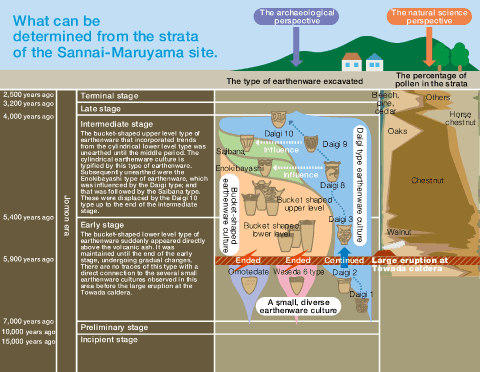Biohistory journal, Winter, 2006: Index > The new culture created by changes in the land
Research
The new culture created by changes in the land


Using highly accurate measurements for dating and analyses of materials used for daily life and other carbon compounds at the site, dates were provided for the earthenware types from the beginning to the end of the settlement. An analysis of the soil strata excluding the relics and remains showed that the area next to the settlement was used for the cultivation of chestnuts.
During the maturation of the Jomon period, which began with the warming of the climate and continued for more than 10,000 years, two cultures flourished from the Tohoku region to the southern part of the Hokkaido region. One of those, the bucket-shaped earthenware culture, suddenly appeared. It was learned from an analysis of the ecology that it began with a large eruption. The combination of archaeology and pollen analysis identified the relationship between the ecology and the culture.
Index
- Dialogue:The starting point nurtured by the community
Kenichiro Ohara / Keiko Nakamura - Research01:The cell walls of Trebouxiophyceae generate a diversity of cellular division
Maki Yamamoto / Shigeyuki Kawano - Research02:The new culture created by changes in the land
Seiichiro Tsuji - Scientist Library:From a cell to an individual organism
Masatoshi Takeichi
|
|